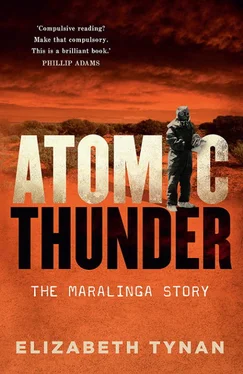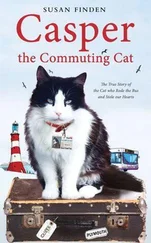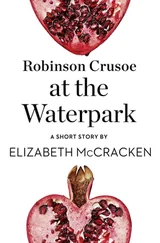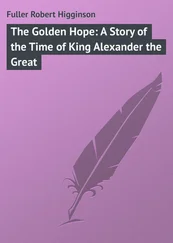The undoing of Titterton was Vixen B, the most secret and most dangerous of all the Maralinga tests (described in chapter 5). The AWRE told the Australian authorities next to nothing about the minor trials, including the new style of test represented by Vixen B. But, especially since plutonium-239 would be used, the British knew they would have to tell the Australian Government something about them. The Vixen B experiments sparked a series of correspondence between the two governments and the test authorities that continued for a couple of years. Some of these letters contained a heated or exasperated tone, as relations between the parties were increasingly strained.
The correspondence began with a carefully worded letter sent by Titterton to Allen Fairhall (who in 1959 was a member of the Parliamentary Standing Committee of Public Works and in 1961 became minister for Supply). Titterton let Fairhall know that the longest lived isotope of plutonium was on the agenda and that this might have some political overtones given the then-current moratorium on atmospheric nuclear tests. The letter, sent on 10 July 1959, was followed on 30 July 1959 by a formal request for approval of the relevant tests, the Vixen A and B minor trials at Maralinga, from the UK minister for Supply to his Australian counterpart. It said in part, ‘Although these experiments are in no sense nuclear tests, it will be desirable to avoid publicity for them in order to remove the risk of their being misrepresented by ignorant or illintentioned persons’.
The Australian minister for Defence Athol Townley, who had taken over from Philip McBride in 1958, also received a copy of this letter, and the following day he sent a reply notable for its glimpse into the preoccupations of that era:
I am not troubled very much by the trials themselves… The political aspects, however, can be potentially dangerous… for the first time it is proposed to use explosives on the Woomera Range which will bring the usual howl from the ‘Ban the H Bomb’ section of the community – Communist and otherwise. It is my view, therefore, that there should be some political discussion on it… I would hesitate to put it into full Cabinet, purely on the ‘need to know’ basis.
This letter attracted the scorn of Justice James McClelland in his 1985 report:
The decision to allow fissile material with a half-life of 24 000 years to be spread on Australian soil, no matter how remote, was evidently in the hands of politicians, one of whom [Townley] did not know that the Woomera Range and the Maralinga Range were not the same thing, and with the exclusion from such a decision of all but two or three members of the Cabinet. This is an instructive little lesson in the style of democratic government in Australia during the Menzies era.
As we have seen, Roy Pilgrim, head of safety co-ordination for the AWRE at Aldermaston, was responsible for issuing the highly confidential and later contentious MEP 1960 safety statement at the end of 1959, the first to include Vixen B. It acknowledged the use of ‘long lived radioactive elements including fissile materials’, while downplaying the consequences. Pearce admitted at the Royal Commission that the safety statements weren’t an appropriate basis for the Australians to judge the safety of the proposed tests. Significantly, the official document requesting Australian approval for the 1960 MEP did not mention Vixen B explicitly, even though it had been discussed with Titterton in his role as head of the AWTSC. Titterton had conveyed the view to the AWRE that ‘the approval process already granted by the Australian Government for the series of experiments now at Maralinga in 1960 covered the type of experiment we now wish to carry out’ and did not advocate a formal approach, which would inevitably have led to detailed questions.
That was not the end of the matter. The Australian authorities were not happy about being denied specific information on the Vixen A and B tests and began exercising an unprecedented capacity to stall and hinder the test program (albeit temporarily), to the chagrin of the British test authorities. The Royal Commission noted, ‘The 1960 proposal for assessment tests, which included the Vixen B tests, caused Australian officials, particularly in the Department of Defence, to question the existing procedures for approval of the program. It was apparent that decisions which demanded political input were being taken by the AWTSC, through its Chairman, without reference to the appropriate Ministers’. The AWTSC was not a free agent; it had been established to represent the interests of the Australian Government and citizens. People were starting to notice that this was not actually how it was operating.
Titterton had gone too far. His attempts to push the Vixen series through the approval stage gave credence to allegations that his first loyalties were to the AWRE and not to his employer, the Australian Government. Australian officials began to have doubts about a process that saw safety information from Aldermaston being sent only to Titterton, whereupon it often stopped altogether. The new and more dangerous kinds of tests on the range made this increasingly unacceptable.
The dynamics at Maralinga were changing, and Titterton’s unquestioned status started to crumble. At this point Menzies got involved in the exchange of messages over the political implications of the plutonium tests. According to the Royal Commission:
When told of the UK proposal, the Australian Prime Minister consulted with senior Departmental officials whose advice contained the warning that Australia had very little information concerning these particular tests. It was not clear to them that the AWTSC [was] any better informed though it was possible that the Chairman had been given some information by AWRE officials.
In reality, Titterton was far better informed than any other Australian official, but, in a conclusion of the Royal Commission, he ‘played a political as well as a safety role in the testing program, especially in the minor trials. He was prepared to conceal information from the Australian Government and his fellow Committee members if he believed to do so would suit the interests of the United Kingdom Government and the testing program’.
A letter from the British deputy high commissioner Neil Pritchard to Maurice Timbs in the Prime Minister’s Department attempted to play down Australian annoyance over the Vixen series and smooth away the growing disquiet. ‘As I understand that your Government would like some further information about the additional trials, which for convenience have been given the codename of “Vixen B”, we have now been asked to advise you as follows.’ The letter then set out some basic information about Vixen B in five dot points, including the claim that the AWRE safety statement given to Titterton for the safety committee gave ‘details of the likely contamination and of the precautions to be taken’. The letter concluded with a plea for rapid resolution of the remaining issues so Vixen B could be added to the MEP and pointed out that ‘the experiments have been agreed by the [Maralinga] Board of Management subject to this formal approval and all precautions are in hand. We expect the United Kingdom Servicemen to arrive early in July’.
The UK Government clearly assumed that the experiments were approved as part of the broad agreements already in place. The British were keen just to get on with it and appear to have been surprised that the Australians were asking questions. In fact, there was no formal approval at this stage. After Allen Fairhall received and reviewed this letter, he wrote to Defence Minister Townley, indicating his support for Vixen B but handing the matter to Townley for the final decision. ‘Defence officials investigated the new situation and noted that, outside the AWTSC, knowledge of the trials was limited to the very general comments about them in the UK High Commissioner’s note.’
Читать дальше












